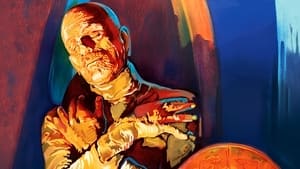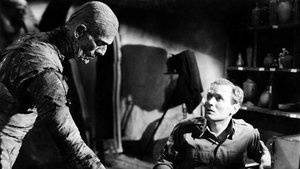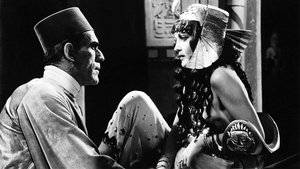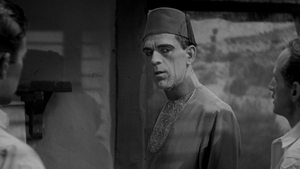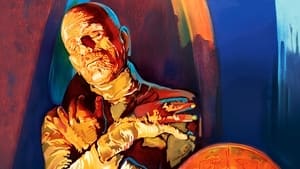Video Sources 0 Views
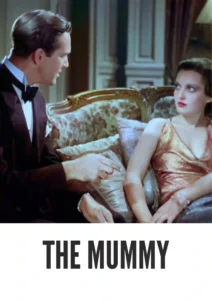
Synopsis
Awaken the Curse: The Mummy (1932) in Vivid Color

Revisit the chilling tale of The Mummy, the 1932 horror masterpiece, now beautifully colorized for a modern audience. Starring Boris Karloff as the resurrected mummy Imhotep, this film blends supernatural suspense with classic monster movie thrills. Perfect for fans of vintage horror and iconic performances, this HD download offers a fresh perspective on a timeless story of love, death, and ancient curses.
The Mummy Storyline: An Ancient Evil Resurrected
The Mummy tells the story of an ancient Egyptian priest, Imhotep (Boris Karloff), who is accidentally resurrected by a team of archaeologists. Imhotep seeks to revive his lost love, an ancient princess, leading to a series of terrifying events.As Imhotep plots to bring his beloved back to life, he clashes with the young woman, Helen Grosvenor (Zita Johann), whom he believes to be the princess’s reincarnation. The film explores themes of obsession, forbidden love, and the dangers of tampering with the past. Imhotep uses dark magic and manipulation to achieve his goals, creating an atmosphere of dread and suspense. Ultimately, The Mummy is a haunting and unforgettable tale of ancient curses and supernatural horror.
Movie Cast
The film boasts a memorable cast of actors who bring this eerie story to life:
- Boris Karloff as Imhotep/Ardath Bey
- Zita Johann as Helen Grosvenor/Ankh-es-en-amon
- David Manners as Frank Whemple
- Arthur Byron as Sir Joseph Whemple
- Edward Van Sloan as Dr. Muller
Movie Genre
The Mummy resides in the realm of supernatural horror, blending elements of mystery, romance, and ancient mythology. Its atmospheric setting, combined with Karloff’s iconic performance, cements it as a cornerstone of the classic horror genre.
Historical Context: Universal Horror and the Pre-Code Era
Released in 1932, The Mummy emerged during the height of Universal Studios’ horror cycle and the Pre-Code era in Hollywood. This period allowed for bolder themes and more explicit content, contributing to the film’s enduring impact. The Mummy reflects the fascination with Egyptology that swept the Western world following the discovery of Tutankhamun’s tomb in 1922. It is a prime example of how classic monster movies captured the anxieties and cultural obsessions of the time.
Colorization Details
This colorized version of The Mummy has been meticulously restored using contemporary digital technology, enhancing its visual allure while preserving the film’s original eerie atmosphere. The colorization process entailed careful analysis of the grayscale tones of the original black and white footage and assigning appropriate colors to each scene. Advanced algorithms for color palette selection and image enhancement were employed. This painstaking process breathes new life into the characters and settings, making the story even more captivating for modern audiences.
Technical Details
- Director: Karl Freund
- Screenplay: John L. Balderston
- Story: Nina Wilcox Putnam and Richard Schayer
- Cinematography: Charles Stumar
- Edited by: Clarence Kolster
- Production Company: Universal Pictures
- Distributed by: Universal Pictures
- Runtime: 73 minutes
Technical Specifications
- Download Format: MP4
- Resolution: HD (1080p)
- Compatibility: Compatible with most devices, including smartphones, tablets, computers, and smart TVs.
Reviews and Critical Reception
The Mummy (1932) stands as a towering achievement in the horror genre, largely due to Boris Karloff’s unforgettable performance. It has been praised for its atmospheric direction, haunting visuals, and exploration of timeless themes. As a cornerstone of Universal’s classic monster cycle, The Mummy continues to captivate and terrify audiences, securing its place in cinematic history.
FAQs
- Q: What is The Mummy about?
- A: The Mummy is a supernatural horror film about an ancient Egyptian priest who is resurrected and seeks to revive his lost love.
- Q: Is The Mummy (1932) considered a classic horror film?
- A: Yes, The Mummy is a highly regarded classic and a cornerstone of Universal’s monster movie series.
- Q: Is this version of The Mummy colorized?
- A: Yes, this version has been professionally colorized to enhance the viewing experience.
- Q: What makes The Mummy an important film in the horror genre?
- A: The Mummy is significant for its atmospheric direction, iconic performance by Boris Karloff, and its influence on subsequent horror films.
- Q: What is the download format?
- A: The download format is MP4, ensuring compatibility with most devices.
- Q: What resolution is the download?
- A: The resolution is HD (1080p), providing a high-quality viewing experience.
Download Now in HD!
Experience the Curse Today!
